The Preservation Of History Through Nature
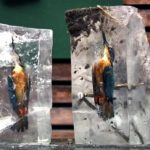
We say that nature is well designed. In these cases, it is also well preserved. These historical discoveries were made thanks to different natural occurrences which conserved and protected different objects and animals from previous eras. Discover how the human race learned more about the past through these impressive discoveries. These things spent years in nature without deteriorating to the pleasure of universities and researchers.
1 Human in a cave

A cave in the Philippines is the foundation of a new theory in the world of science: a new human species. The bones found near the island of Flores did not belong to any previously known species.
The discovery led to the addition of the Homo luzonensis, a 67000-year-old specie, to the list of the ancestors of the humankind.
2 Wooly Mammoth
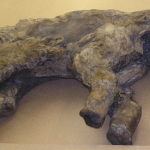
Said to be about 39ooo years old, this woolly mammoth was says considered one of the most well-preserved ones ever found. It even still had blood and muscle.
The specimen was found in Siberia, more specifically in The Novosibirsk islands which constitute a part of Northern Russia. The ancient animal was preserved in ice.
3 A complete city underwater

Not quite Atlantis, there is however a wonderful underwater city hiding beneath sea level. The ancient city of Pavlopetri is situated to the South coast of Greece, in the mediterranean sea.
If you can invest in proper scuba diving gear and find a good guide, this gorgeous city dating from the Neolithic era is more than worth exploring.
4 Biblical texts

Dating from more than 2 000 years ago, a body of biblical manuscripts have been discovered by chance in a cave near the Dead Sea.
Archaeologists have to credit the particular and highly saline climate of the Dead Sea which allowed to preserve these biblical texts for years.
5 Mummies in ice
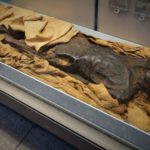
Human sacrifice is a ritual that multiple ancient societies practised. Trading a human life for protection, rain and a good harvest was perceived as a normal and logical act.
For the Inca, the tradition wanted that these sacrifices be performed at the top of the highest mountain. The extreme conditions there allowed the bodies to be preserved in ice.
6 Plane in ice

The Titanic is not the only vehicle to have experienced a luckless encounter with a glacier. Travel insurance probably does not cover this kind of accident because of how rare it is. Yet, it unfortunately happened at least once.
In 1952, a US military plane heading to Alaska crashed into a glacier. Rescuers could not reach the site because of the danger it involved, but 50 years later, when people were finally able to visit the wreckage, the cold had preserved it all.
7 Shipwreck
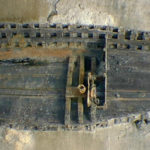
The Baltic Sea was home to the best-preserved shipwreck dating from the 16th century. Considering the conditions of the boat and the era to which it belongs, some archaeologists tend to credit Sweden’s war of independence for this shipwreck.
Others, however, don’t buy into this theory and are more prone to believe that this ship sunk during the Russo-Swedish war.
8 Siberian horse

The best-preserved Ice-Age animal was fairly recently discovered… In ice. Searchers claim that the creature in question found in Siberia dates from some 42000 years ago.
The animal is an ice-age foal. It was so well preserved in permafrost that scientists, through trial and error, were able to discover that the body still contained liquid bodily fluids and muscle tissues in their natural state.
9 Ancient trees in Antarctica

Yes, in Antartica. And no, we don’t need make-up classes. We are very well aware that Antarctica is basically a freezing desert. But it wasn’t always been that way.
Searchers have discovered multiple fossil fragments that reveal that this frozen land once was covered in trees: Antarctica used to be a forest.
10 Old lemur in a cave

Lemur remains sitting in a cave might not sound very special, but these are no ordinary lemurs and no ordinary cave. In Madagascar, an underwater cave was discovered which contained multiple bones of giant extinct lemurs.
This lemur graveyard is catching the interest of multiple University research centre which would like to study the bones.
11 Frogs in ice

We sometimes make bad choices form which we never recover. It is the case of a few frogs in Norway. We all know that getting wet when it is incredibly cold outside is a bad idea. These little frogs learned it the hard way.
These poor amphibians only wanted to cross a stream, but the combination of their soaked bodies and the cold air had them freeze to death.
12 Neanderthal structures and jewels
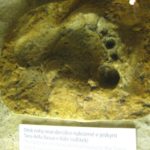
Or course, they were not going to start renting a bungalow, but some well-preserved neanderthal structures were found in a cave in France and searchers are still clueless as to what it was for.
Along with the strange structures, archaeologists found jewellery which is very fascinating and suggests that our ancestors cared about objects with no other purpose than aesthetic.
13 Bacteria in ice

Ice does not only preserve things we can see. It can also serve as a retirement home for ancient bacterias. By ancient, we mean 8 million years old.
Microorganisms have been found in the Arctic that are fascinating scientists who are estimating that the bacterias could have ended there because of the wind.
14 Weapons in ice

Ice is an excellent place to look for anyone in University looking to make a big discovery. For instance, multiple 10 century-old spears were found in Yellowstone.
The weapons revealed a lot of information about how humans used to live. We now know that they could live in cold climates and how they would hunt and create weapons.
15 Birds in ice

Blocks of ice containing birds in the middle of a dive have been found in northern Bavaria. This quite unique sight is the result of freezing water temperatures.
These birds, in their quest for food, dove so deep that they were frozen on the spot and never to recover from this faithful winter dip.
